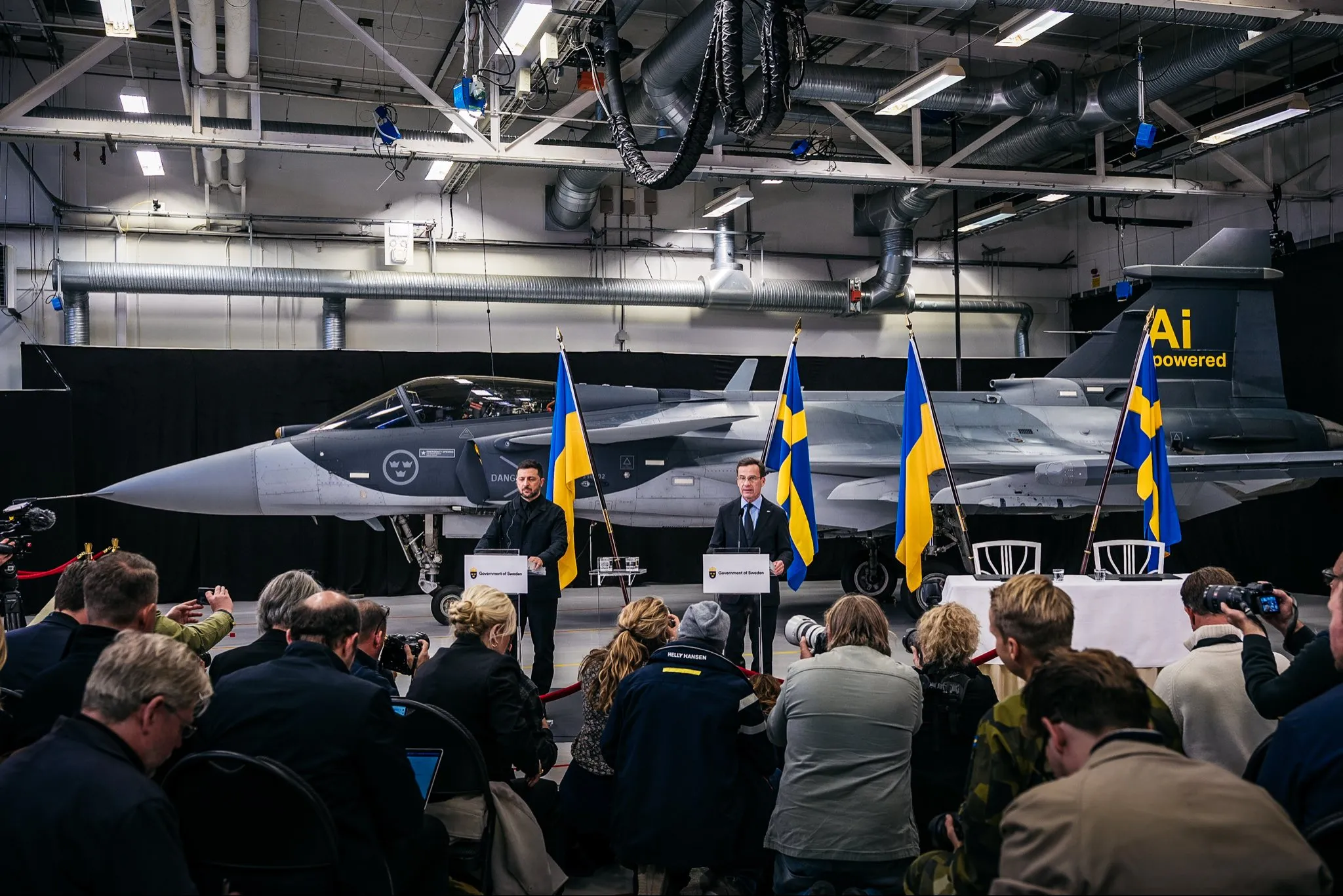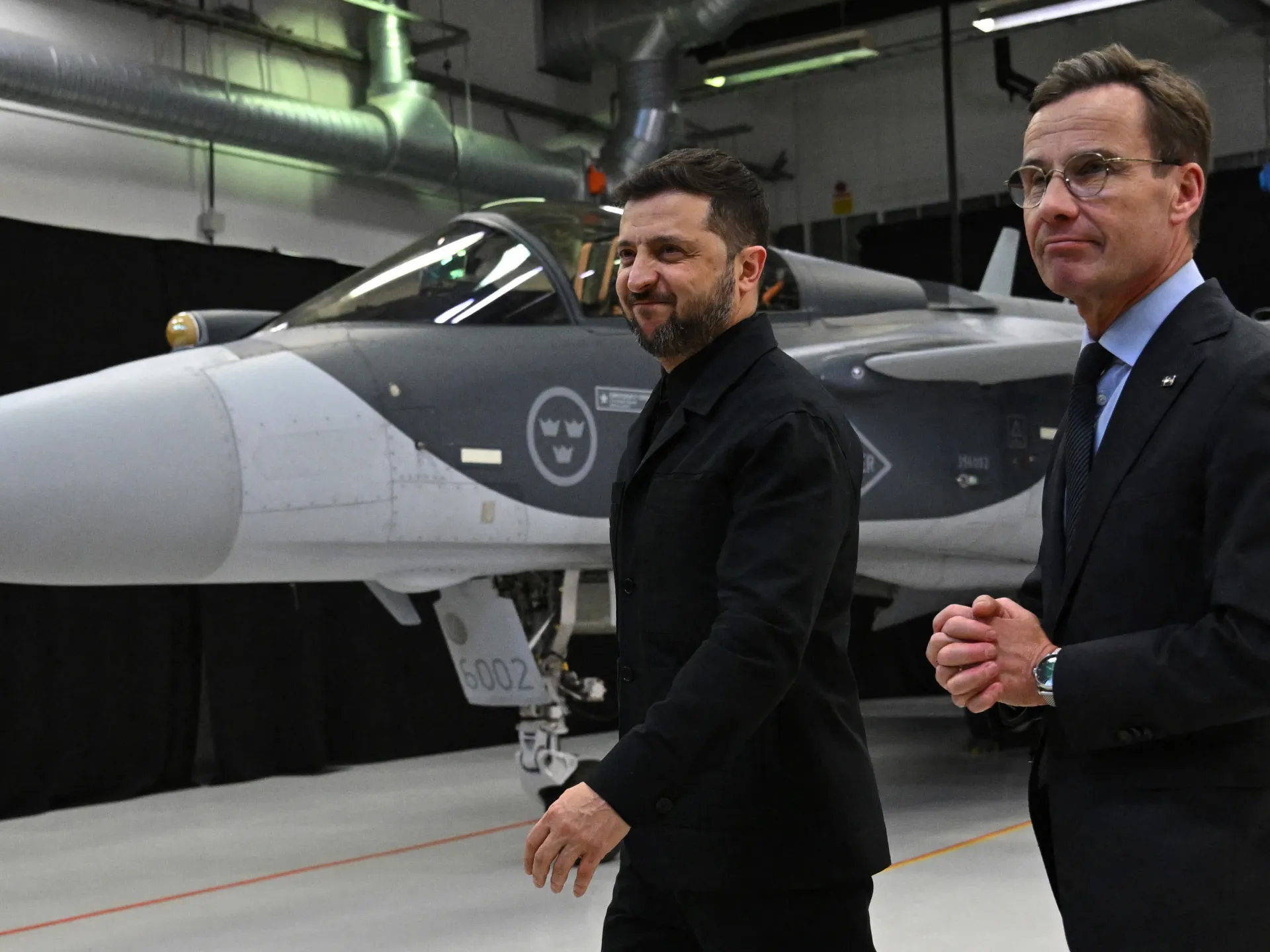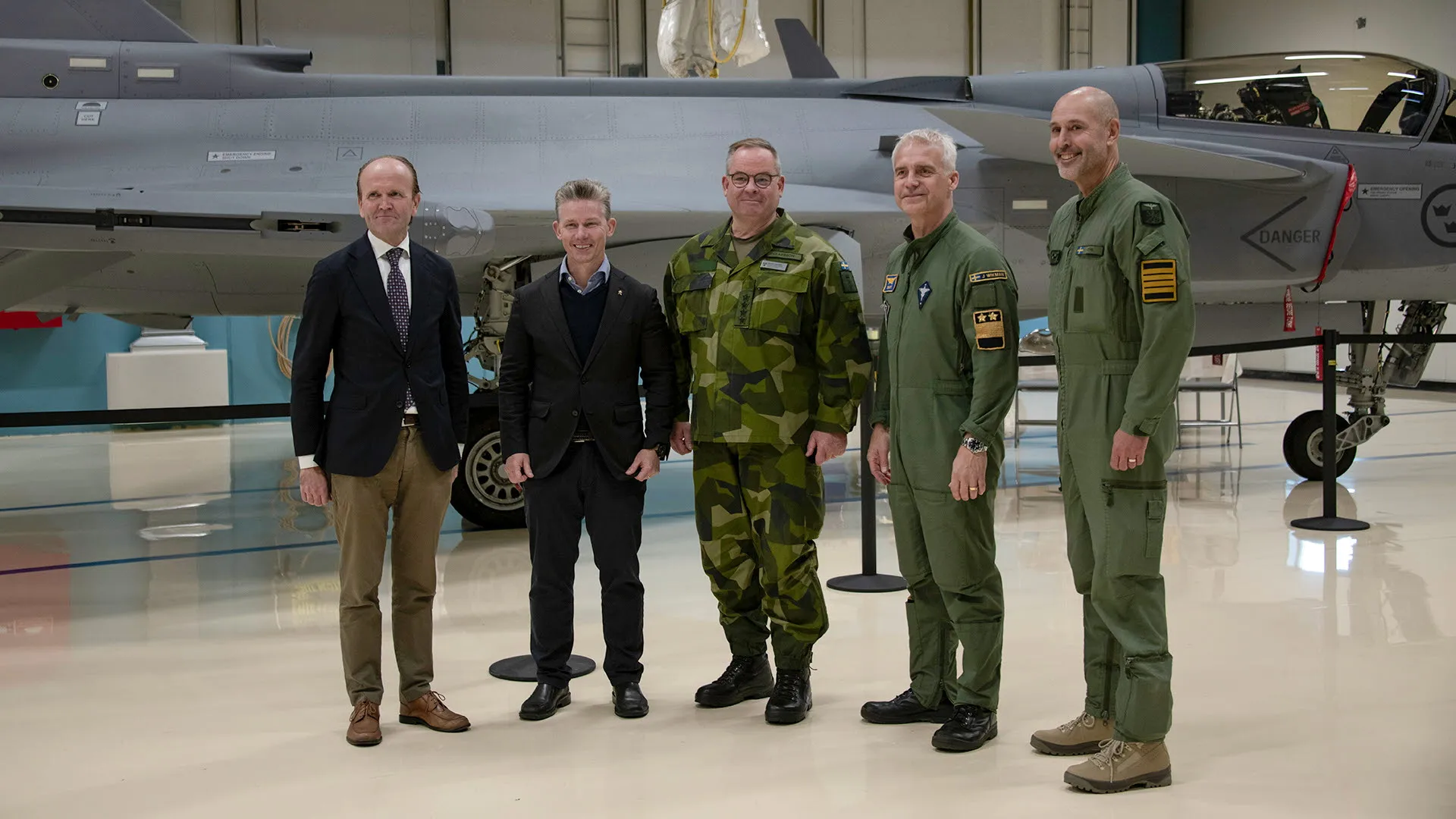Huge Gripen Fighter Order Letter Of Intent Signed By Ukraine
The long-running saga of Saab Gripen fighters for Ukraine took a dramatic new turn today, with the Swedish and Ukrainian leaders unveiling a plan to export as many as 150 Gripens to Kyiv. While no timeline has been set, and the financing is yet to be determined, the deal, if it goes ahead, would provide Ukraine with its first new-built fighter jets since it gained independence from the Soviet Union in 1991.
Swedish Prime Minister Ulf Kristersson and Ukrainian President Volodymyr Zelensky today signed a letter of intent (LOI) with the aim of “deepening air force cooperation.” The cornerstone of this is a potential major export deal covering “likely between 100 and 150 fighter jets,” according to Kristersson. The LOI was signed in front of a Gripen E at Linköping, the site of Saab’s manufacturing facility for the fighter.

“Sweden supports the development of Ukraine’s future air force,” the Swedish government said in a statement. “This new Swedish–Ukrainian cooperation will include exchange of experience and knowledge on air combat and defense and on the use of advanced capabilities in this area, for example, fighter aircraft.”
At Linköping, Zelensky “got the chance to see first-hand the impressive capabilities of the Gripen fighter,” Kristersson said, describing the LOI as “a step towards a massive possible export deal regarding Gripen.”
Kristersson continued: “We fully realize it’s a long road ahead of us, but from today we are committed to exploring all the possibilities in providing Ukraine with a large amount of Gripen fighters in the future.”
As well as the plan to get Gripens into Ukrainian Air Force hands, the Swedish government said that it would harness Ukraine’s “unique experience of air combat and defense” as it continues to develop advanced systems, including the Gripen.
Even if Ukraine receives ‘only’ 100 Gripen E/Fs, this will mark by far the biggest export order for the type and Sweden’s biggest-ever arms sale. It is also significant that the Gripen has long been touted as very suitable for Ukraine, especially since it was built from the start with austere operations in mind; Ukraine is regularly conducting these kinds of operations to keep its fighters from being destroyed on the ground.

So far, Brazil has ordered 36, Thailand has ordered four, and Colombia is set to buy between 15 and 24. For its part, Sweden has ordered 60, the first of which was delivered to an operational unit earlier this week.
The LOI covers the in-production Gripen E. Despite it having a similar outward appearance to the Gripen C/D, the Gripen E is regarded as a completely new aircraft type — as you can read about here.
In the past, Ukraine has repeatedly been linked with a possible transfer of secondhand Swedish Air Force Gripen C/Ds, a topic that was reportedly discussed between Zelensky and Kristersson earlier this month.
Sweden’s long-term plan is to have 120 Gripens in service by 2030, with half being E variants. That would leave roughly 37 Gripen C/D models potentially available to Ukraine, but the number is likely somewhat lower due to airframe fatigue and other factors.

Kristersson has said it would take around three years for new-build Gripen Es to arrive in Ukraine. With an urgent need for fighters, Zelensky today said he would like to see Gripens delivered from 2026. That would almost certainly involve secondhand Gripen C/Ds.
Ukrainian pilots have already been exposed to the Gripen C/D in Sweden, where test flights began in 2023.
Despite the arrival of Western-supplied F-16s and Mirage 2000s, the Ukrainian Air Force continues to rely heavily on its Soviet-era fighters. The MiG-29, in particular, has been continually adapted to carry new weaponry, both Western-supplied and locally developed.
Long-term, however, Ukraine has been looking to acquire advanced Western-made fighter equipment in more significant numbers than the secondhand F-16s and Mirages, stocks of which are limited. Meanwhile, the Mirages and F-16s are now old, approaching the ends of their service lives, and will need to be replaced before too long.
As we’ve highlighted in detail as far back as April of 2022, Gripens would be a very good fit for Ukraine:
“Another option, and possibly the best of all, would be Sweden’s surplus JAS 39C/D Gripen multirole fighters. These light-to-medium-weight fighters are built with great efficiency and reliability in mind. They were designed to be turned around in the bush by tiny teams of mainly conscripted groundcrew and flown from roadways and rough fields during wartime. Distributed operations under very harsh sustained wartime conditions, especially in the cold, are literally what the design is all about.”
“Their single F404-derivative engine (license-built by Volvo) drinks comparatively small amounts of fuel compared to the other options, and the type has a wide array of available armory from multiple nations. It has all-around good performance, modern radar and avionics, and is small in size, making it hard to spot visually.“
“The Gripen really is well-suited for the current combat doctrine Ukraine is using in Ukraine today, although the fact that it is a Swedish design makes it a bit harder for the United States and NATO to supply and support it. Still, other NATO members operate the type. There is also the question of how many Swedish Gripens will be able to give up at this time.”
While Gripen C/Ds might still be supplied in the short term, which would help considerably with training and transition, Ukraine would ultimately receive the more capable Gripen E (and potentially also the two-seat Gripen F).
The Gripen will also provide Ukraine with a notable opportunity to work with the two Saab 340 airborne early warning and control (AEW&C) aircraft equipped with Erieye radar that have been donated by Sweden. A delivery date for the transfer of these aircraft to Ukraine has not been announced.
However, the Saab 340 AEW&C aircraft “will provide Ukraine with a completely new capability against both airborne and maritime targets,” the Swedish government has said. “Ukraine’s capability to identify and engage targets at long range will be strengthened. The package will also include a holistic solution that involves training, technical equipment, and methodological support for air surveillance and command and control.”

Once Gripens are available to Ukraine, the Saab 340 AEW&C will be able to operate alongside them as a fighter control asset, detecting targets, prioritizing them, and then assigning them to the fighters for interception.
Today’s announcement could potentially yield the biggest overhaul for the Ukrainian Air Force since the country gained independence in 1991. How this will sit with other Western nations that are also supplying arms to Ukraine, and especially the United States, is far from clear. However, Sweden has long taken a more autonomous approach when it comes to defense exports.
But there are many more hurdles to overcome before the jets might start to arrive on Ukrainian soil. First, it has to be determined how Kyiv will pay for the fighters. Second, there are questions about how rapidly Saab might be able to start producing Gripen Es for export, and in what kind of numbers; potentially, it might be able to leverage the Brazilian Gripen production line. Lastly, and most critically, Ukraine still has to survive an existential conflict with Russia before it can get its hands on any of its much-anticipated Gripens.
Contact the author: [email protected]













